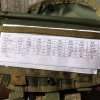Your last part is key. After going to Rob's optic class, if you don't have the understanding, it won't matter at all, MOA, shooters MOA, Mil, just won't matter.
Yes, the mixed turret/reticle are still a mystery to me. Doesn't make much since to add that extra step of annoying to an optic.
Just learning more about long range optics, but I think MOA will be my first choice. Unknown ranging should be the same-ish for both from seeing the examples and hearing how too. The part I see having the biggest issue with will be sizing a target (the human interpretation error part), especially something very far in high heat when you cannot use you max power. Again though, lots for me to learn. Long range optics have been my weak point for sure. Just hoping to get into them and get comfortable with the basics and going from there.
Learning some of this stuff, I'm no master at it btw, made me wonder why anybody wants to buy bdc type scopes. They're only set to one load in lab conditions so you have to add in the figuring anyway.
If you're an iron sights shooter, you can also do a plenty good enough job ranging with no optics at all. Measure your front sight post width in moa and go from there.
A feature of Appleseed KD clinics is measuring targets of known size at unknown distances. Targets will be hid, sometimes dressed in fatigues, in different cover and distances. Students will be given a time limit to ID and range and must get it within 5% up or down to get credit. I've seen quite a few winners of the game do with nothing but their FSP.



